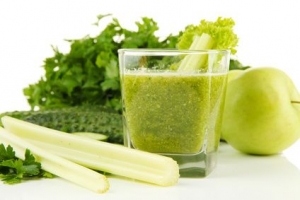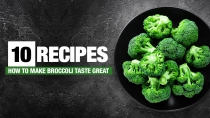
Many people take antioxidant supplements to reap anti-cancer, anti-aging and other health benefits. However, getting antioxidants in your diet is easy, and some of the tastiest foods out there are packed with them!
But before we talk about what to eat, let’s talk about why. What are free radicals and how can they affect your health? Why are antioxidants even more important when we exercise regularly? And why is exercise important for fighting free radicals?
FREE RADICALS
Scientifically speaking, a free radical is a reactive atom that has one or more unpaired electrons. Say what?!! Stick with me here. These atoms float around in your body looking for electrons to pair with so that they can remain neutrally charged. Often these atoms steal electrons from healthy molecules in your body, causing damage and mutation. This damage can cause premature aging, cancer, heart disease and diabetes. BUT, if you have antioxidants in your bloodstream, the free radicals will pair with their electrons instead, leaving your healthy molecules intact.
Where do free radicals come from in the first place? Bad habits like smoking, drugs and alcohol consumption cause the body to produce them, but they also are caused by other things in our environment such as pollution, food additives, chemicals and radiation.
WHAT HAPPENS WHEN WE EXERCISE?
With aerobic exercise the production of free radicals actually increases! This is because carbohydrates and fats are being converted into energy through a process called oxidation (yes, the same process by which metal rusts). During the oxidation process, not all of the oxygen atoms bind with hydrogen, and some of them end up as free radicals.
When antioxidants are at a lower than normal level in the body, it can produce oxidative stress, which can cause cellular death, hormonal problems, inflammation, protein alterations and mitochondrial dysfunction. According to research, people who exercise sporadically, such as only once per week, are more likely to experience oxidative stress than those who train regularly on a daily basis. Since regular exercise can enhance the antioxidants’ ability to fight free radicals, it’s all the more beneficial to workout 4 – 6 times per week.
 ANTIOXIDANTS IN THE DIET
ANTIOXIDANTS IN THE DIET
Vitamins A, C and E as well as lutein, carotene and lycopene are important antioxidants that you can increase in your diet by eating the right foods.
Vitamin A – You can find it in carrots, spinach, meats and milk. Vitamin A is fat soluble (as opposed to water soluble) and is stored in fat. Therefore, it’s best not to supplement Vitamin A – too much can be toxic.
Vitamin C – This is the most well-known antioxidant vitamin, and it has significant immune system benefits too. Berries are super antioxidants, and citrus fruits will help you get a good dose of vitamin C as well. Leafy greens like spinach and broccoli also contain vitamin C.
Vitamin E – Spinach, sweet potatoes and nuts such as walnuts, almonds, pistachios and hazelnuts contain high levels of vitamin E.
Lutein – Cooked spinach (notice that spinach is on every list so far!), kale, collards, turnip greens, broccoli, mustard greens, raw lettuce, brussels sprouts and beet greens are excellent options for getting lutein into the diet.
Beta-Carotene – Leafy greens win out again! Other good beta-carotene sources include sweet potatoes, carrots, apricots, mangoes and cantaloupe – pretty much anything orange!
Lycopene – Tomatoes, pink grapefruit, guava and watermelon contain high levels of lycopene.
 WHICH ANTIOXIDANTS ARE MOST POWERFUL?
WHICH ANTIOXIDANTS ARE MOST POWERFUL?
Some antioxidants are measured by their ORAC (Oxygen Radical Absorbance Capacity) value, which is a method to determine overall antioxidant power of specific foods. The higher the number, the greater the antioxidant power of the foods. While the ORAC value is a good guideline, it only includes water-soluble (not fat-soluble) antioxidants. There are also many antioxidants that have not been measured by any standards. Below is a list of ORAC values of some common fruits and vegetables.
Values are given per 100 g, or 3.5 oz.:
FRUITS–ORAC VALUE
Prunes–5,770
Raisins–2,830
Blueberries–2,400
Blackberries–2,036
Cranberries–1,750
Strawberries–1,540
Pomegranates–1,245
Raspberries–1,220
Plums–949
Oranges–750
VEGETABLES–ORAC VALUE
Kale–1,770
Spinach, raw–1,260
Brussels sprouts–980
Alfalfa sprouts–930
Spinach, steamed–909
Broccoli florets–890
Beets–841
Red bell pepper–713
Onion–450
Corn–400
Source: Agriculture Research, February 1999
The bottom line? If you’re eating well and including lots of fresh veggies (especially greens) and fruits in your diet, you’re likely to be getting a lot of good sources of antioxidants in your diet. All of these fruit and veggie suggestions are also included in the Athlean-XX for Women Nutrition Plan. Our recommendation is to include two fruits/veggies with every meal. However, if you’re looking for a an easy way to get some great antioxidants (with anti-aging benefits too!) into your diet, try our Athlean RX 4Women Protein Supplement. In addition to 26g of protein per serving, it also includes antioxidants Co-Q-10 and Resveratrol (red wine extract) to boost energy and fight free radicals. Did I mention it comes in Dutch Chocolate and Vanilla Cream flavors? Makes a fabulous breakfast smoothy!







